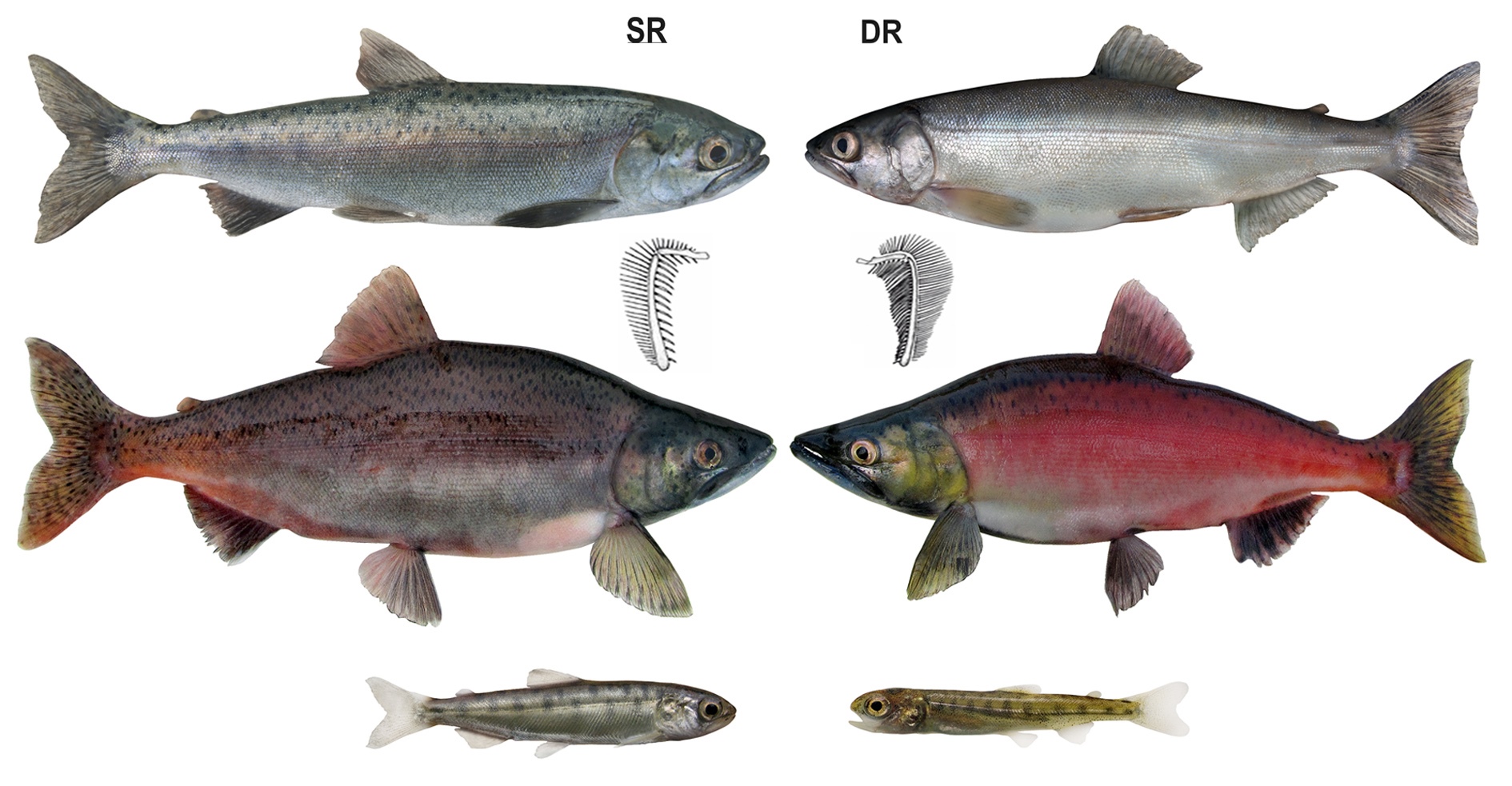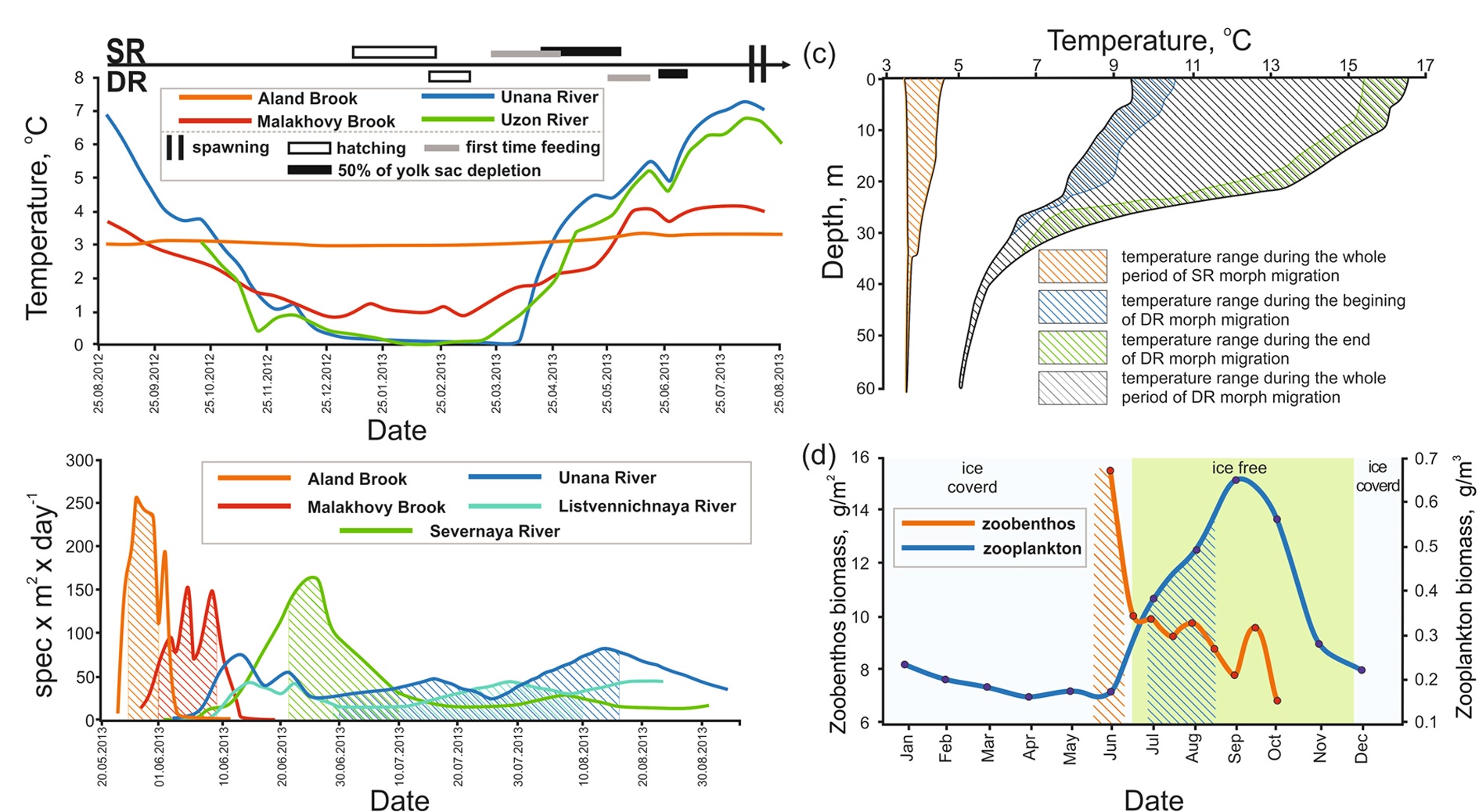
For fish from lakes of high latitudes, the formation of pairs of sympatric forms is characteristic, which separate the resources of the bottom and the water column. The fish begin to feed on pelagic plankton (its consumers) or benthic invertebrates, form a specific adaptive morphology, and disperse according to spawning sites (terms). As a result, reproductive isolation rapidly develops between sympatric forms, and inherited differences begin to accumulate. Similar pairs of nascent species have been found in abundance among salmon and whitefish from post-glacial lakes.

Scientists from IEE RAS, together with colleagues from the Kronotsky State Reserve, VNIRO and M.V. Lomonosov Moscow State University successfully conducted a study of salmon fish, divided into pelagic plankton-eating and demersal benthic-eating forms in Kronotsky Lake in Kamchatka. An article has been published on the topic that reveals the mechanism of this ecological divergence. It has been established that the causal relationship between the timing of the formation of plankton and benthos production peaks in a water body, the temperature-dependent rate of development of forms in spawning grounds, and the timing of downstream migration of juvenile forms from reproduction to feeding areas together determine the formation of two invariant ecological niches that ensure the effective action of disruptive selection in population system. Juveniles of the benthic form from warm-water spawning grounds enter the reservoir at the beginning of summer and are forced to specialize in feeding on benthic invertebrates, whose biomass peaks at the beginning of summer. Plankton-eating juveniles from cold-water spawning grounds will enter the reservoir later, when the benthos biomass falls, but there is a surge in the abundance of planktonic crustaceans. An analysis of the literature and own data available to the team of authors shows that with a high probability such a mechanism is universal for water bodies of northern latitudes.
Original publication: Markevich G.N., Izvekova E.I., Anisimova L.A., Mugue N.S., Bonk T.V., Esin E.V. 2022. Annual temperatures and dynamics of food availability are associated with the pelagic-benthic diversification in a sympatric pair of salmonid fish. evolutionary biology. https://link.springer.com/article/10.1007/s11692-022-09560-6
